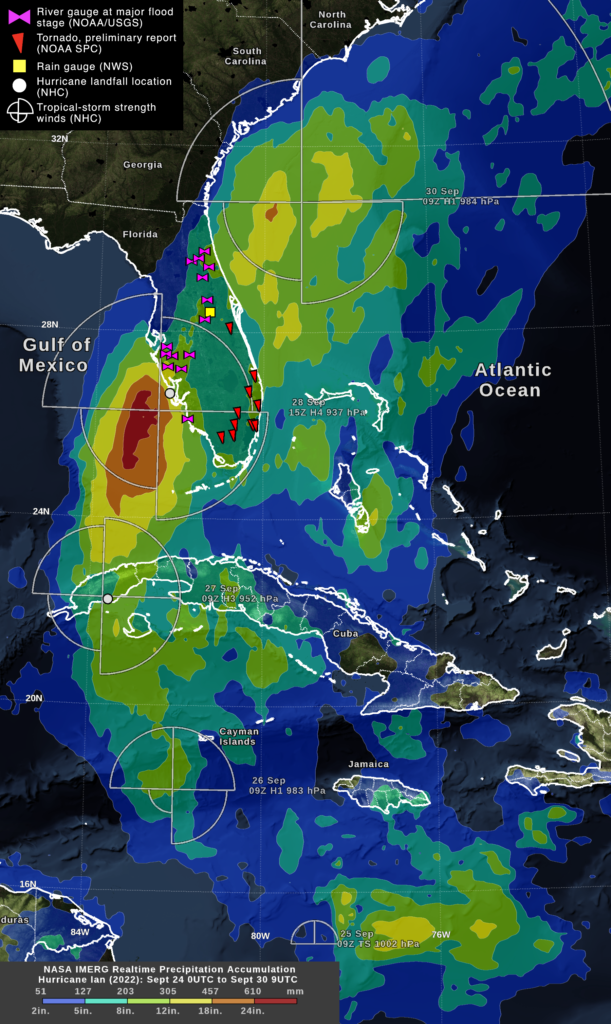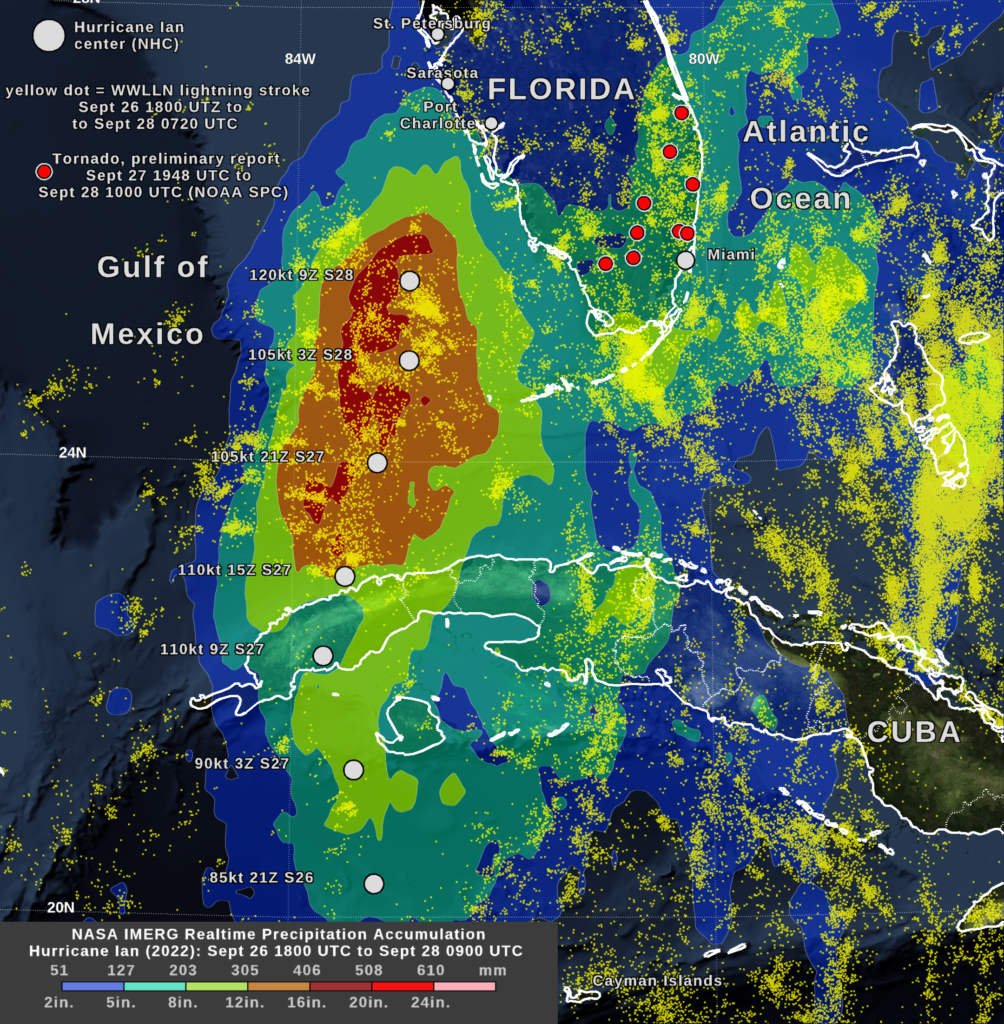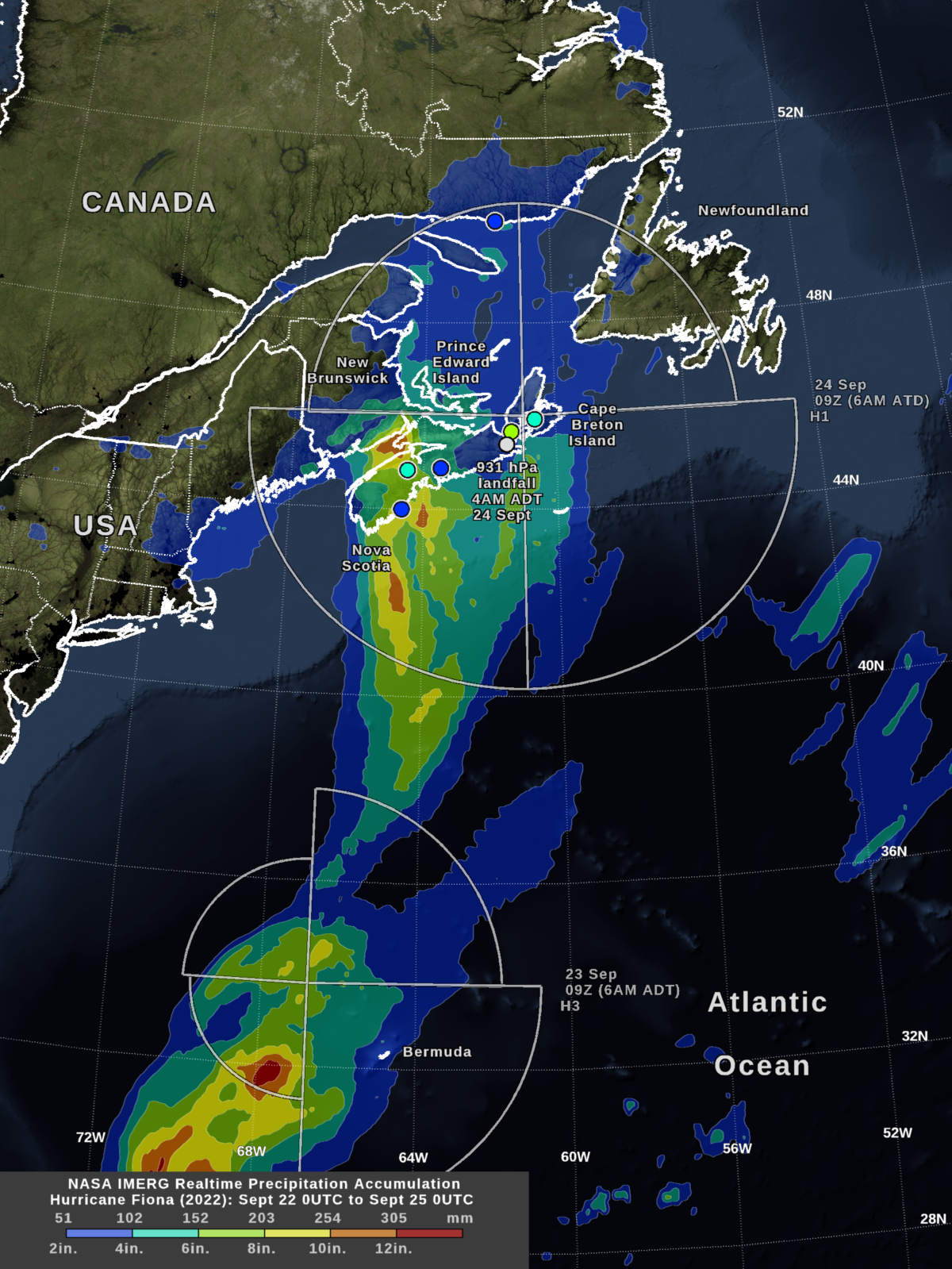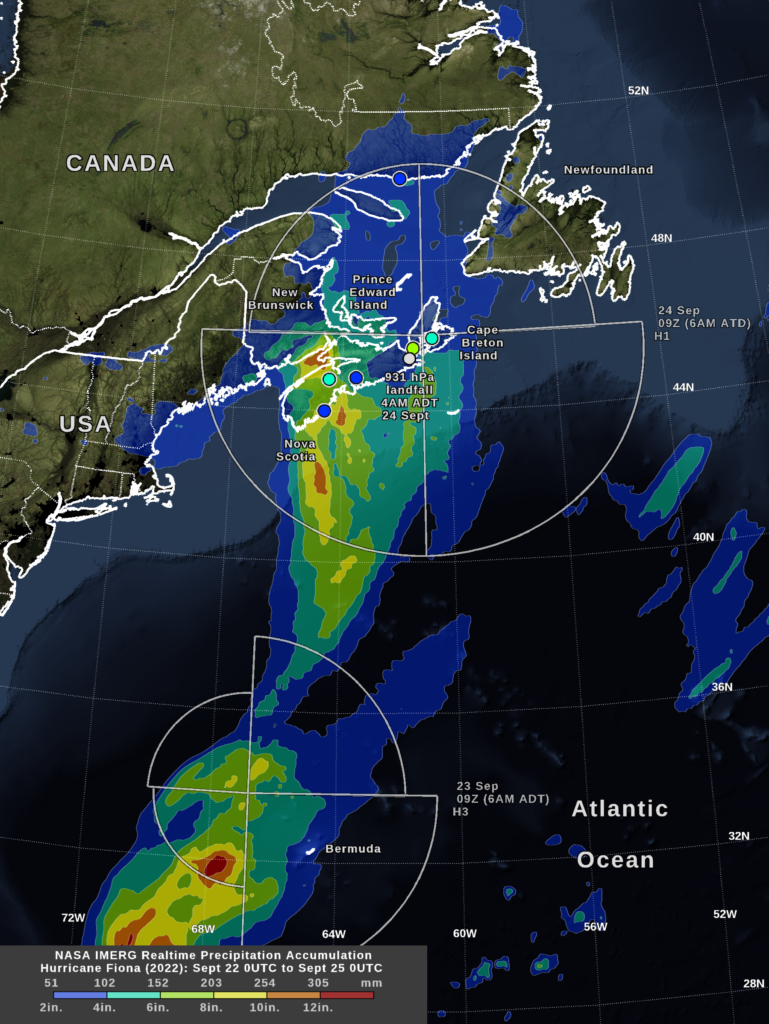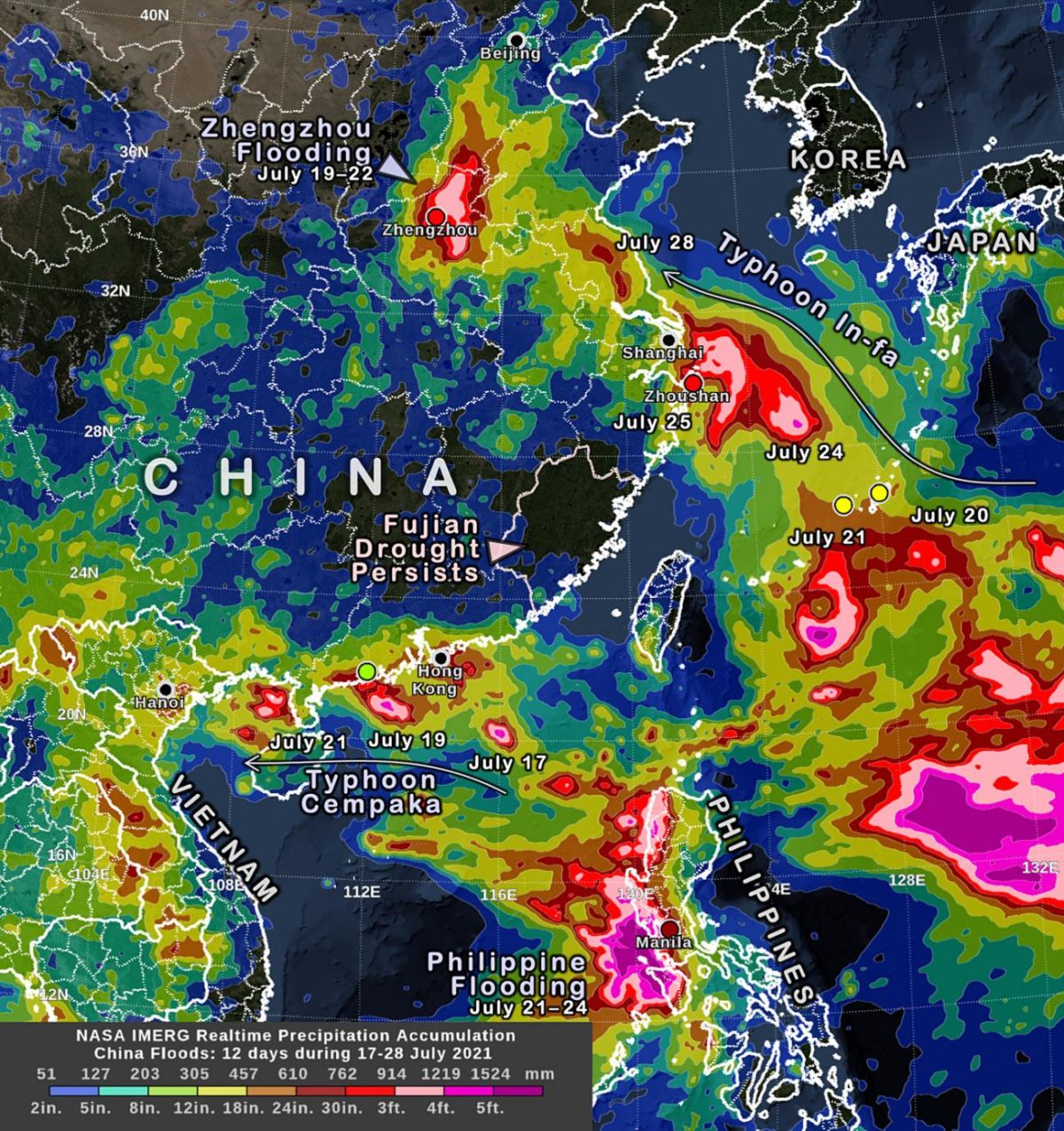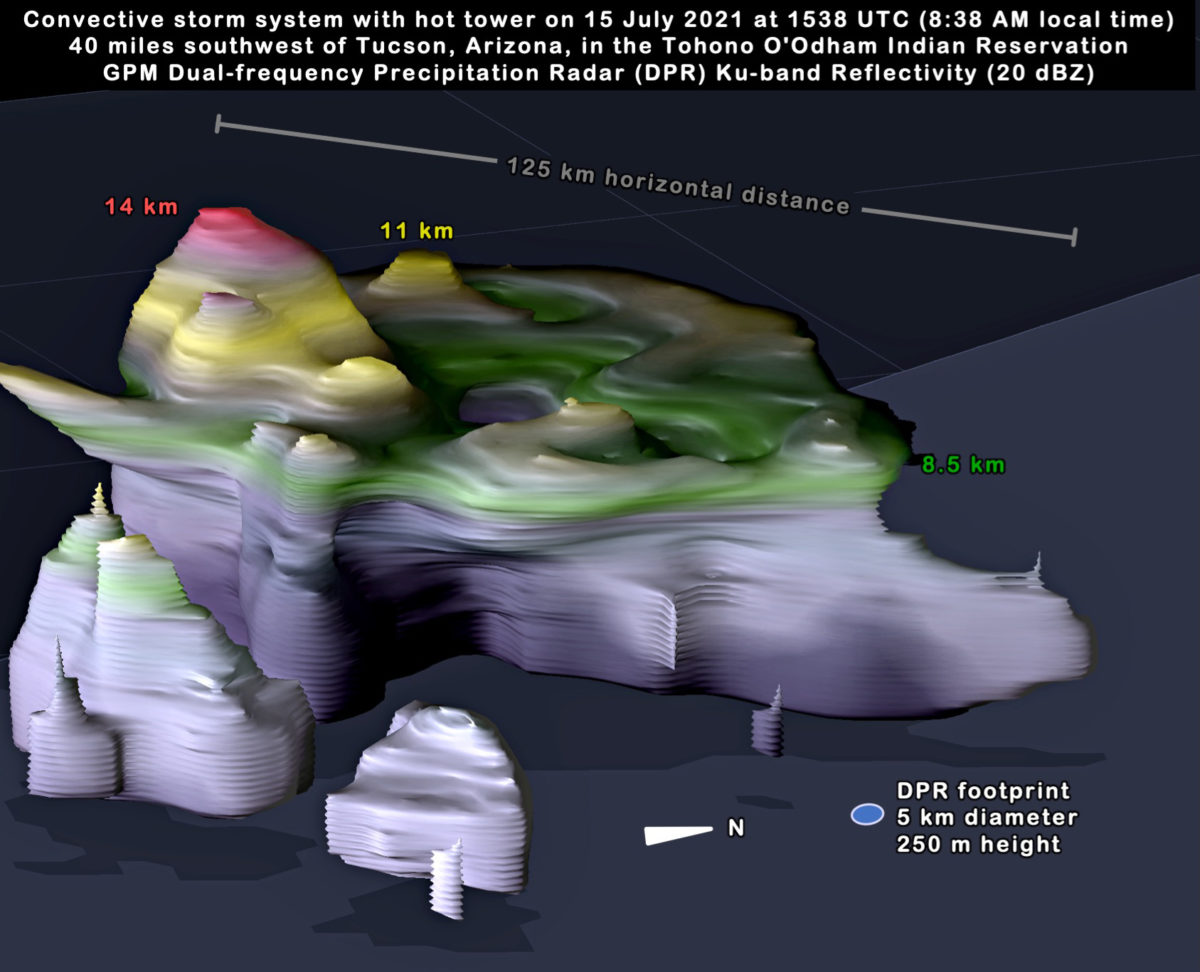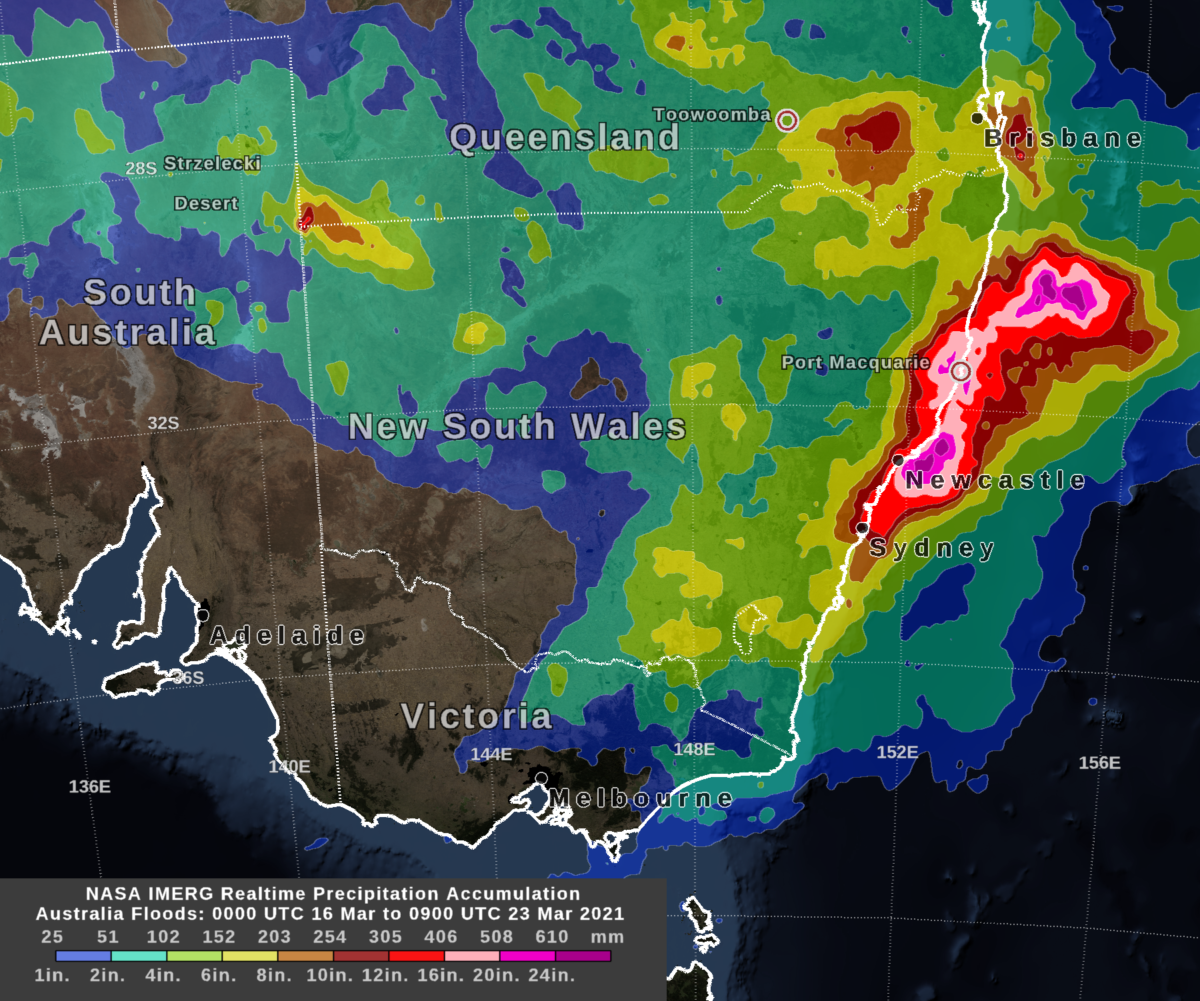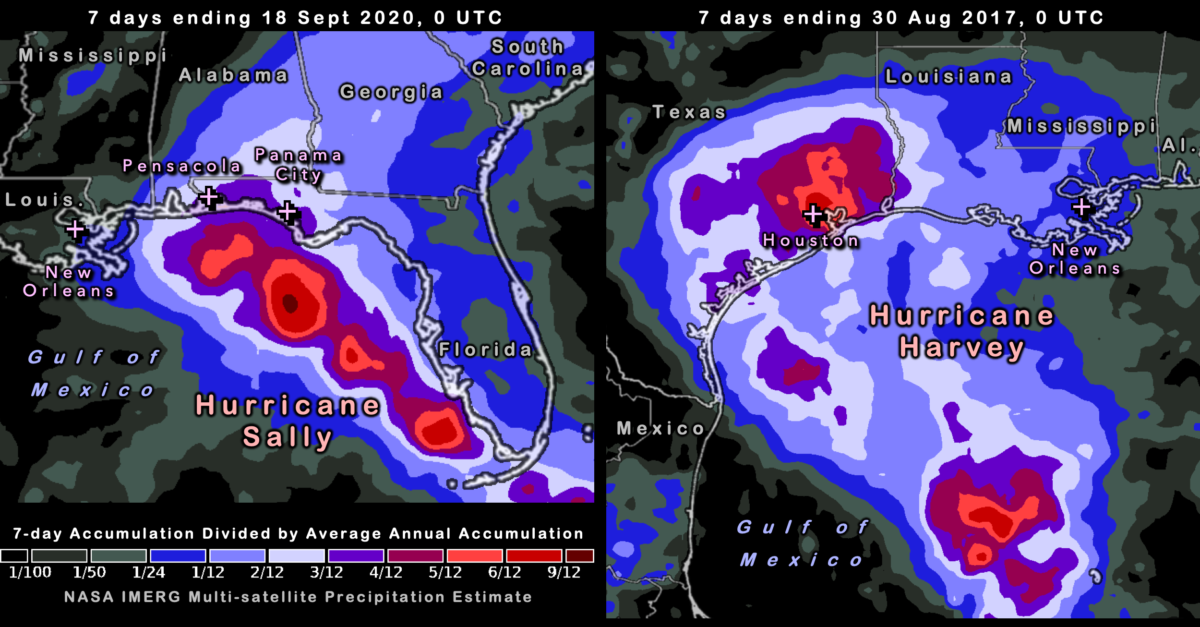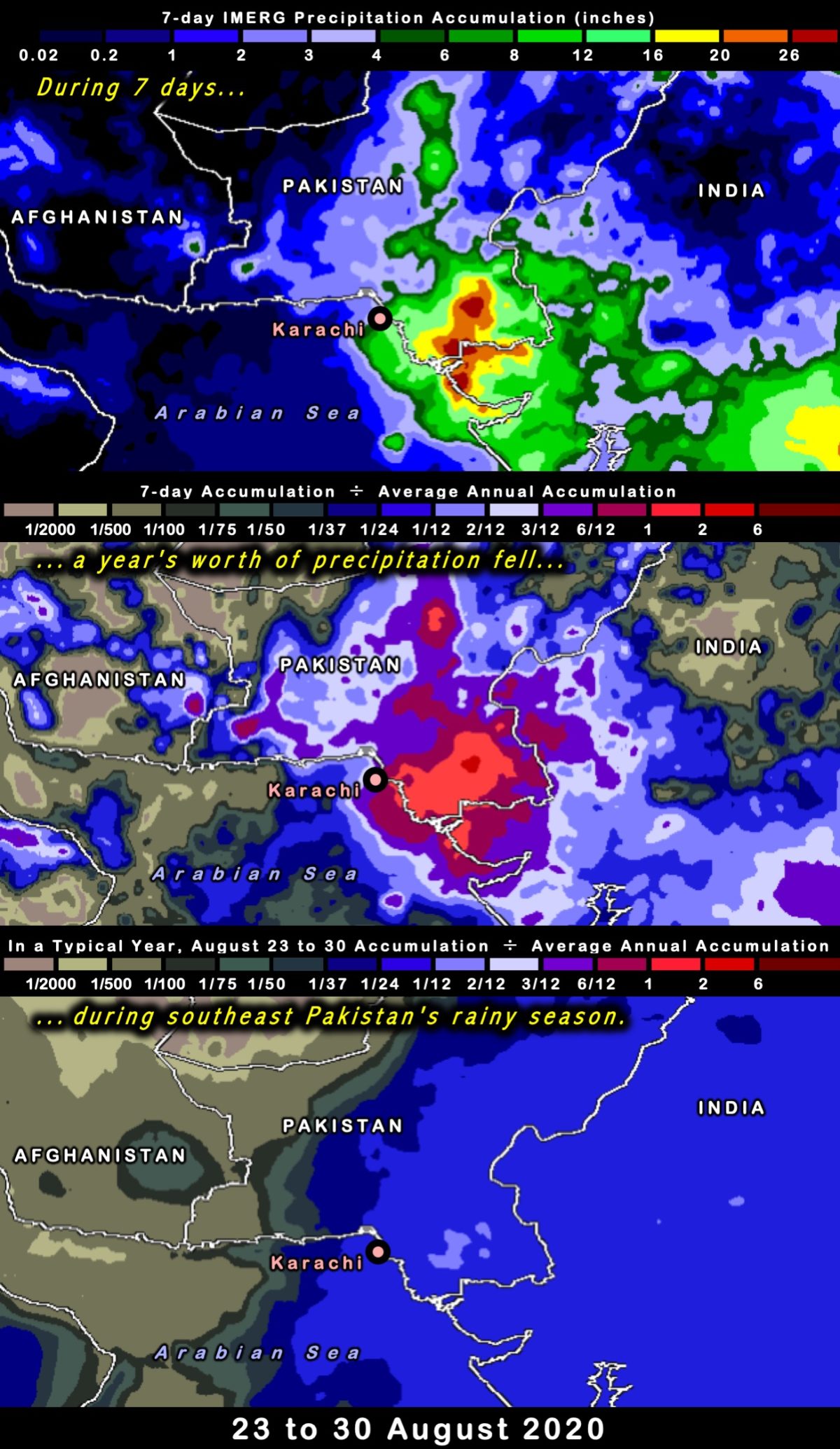On Monday evening, Sept. 23, 2024, an unusual hurricane struck southern Mexico, dumping 20 inches of rainfall along the coast according to estimates from NASA’s IMERG precipitation product. The following image shows these rainfall estimates.

Observations from an international constellation of satellites were the starting point for calculating these estimates, and the data confirm that forecasters in prior days were right to warn of possible heavy rainfall. Forecasters did have trouble predicting the storm’s track and intensity, though. In the rural area of southwestern Mexico where Hurricane John struck, there are few rain gauges that provide public data in real-time, so having calibrated multi-satellite near real-time precipitation estimates like IMERG available is particularly valuable for understanding this storm as it unfolded.
The contours in the image cover the areas where the IMERG algorithm estimated that 5 inches (blue) to 36 inches (bright red) of rainfall fell during a four-and-a-half-day period ending on Friday, Sept. 27, at 3 a.m. CST (0900 UTC). The dashed yellow line in the image shows the U.S. National Hurricane Center’s estimate of the path taken by the storm’s low-pressure center.
According to NOAA hurricane track data, approximately once a year during the past 50 years, one major hurricane over the eastern Pacific has passed within 800 miles of this part of southern Mexico. Almost all of these hurricanes moved roughly west over the ocean, parallel to the coast. Before Hurricane John this year, only two other times during the past 50 years has a major hurricane made landfall within 150 miles of where Hurricane John hit Mexico on Monday. On Sept. 23, John made landfall near the small, coastal village of Punta Maldonado, which is located about 100 miles east of the town of Acapulco. The two other hurricanes that had made landfall in the same region in prior years were Hurricane Pauline in 1997 and Hurricane Otis in 2023.
John was just a 40-knot tropical storm at 3 a.m. CST on Monday, and forecasters had only expected it to become a slightly stronger tropical storm during the following 24 hours before making landfall and dissipating. Instead, John experienced extremely rapid intensification to become a 105-knot Category 3 hurricane on the Saffir-Simpson scale. This intensification occurred during a period that was merely 18 hours long, immediately before landfall. Following landfall, societal impacts were moderated by the fact that the storm hit a low-population region of Mexico.
According to the National Hurricane Center, John made landfall around 9:15 p.m CST in Mexico on Monday evening (Sept. 23, 2024), which was 0315 UTC on Tuesday morning, Sept. 24, in universal time.
On Tuesday, Sept. 23, Hurricane John was forecast to dissipate over land, and for part of Tuesday, the National Hurricane Center stopped issuing advisories for it. However, the storm’s remnants moved over the Pacific Ocean again where the system regained hurricane strength (65-knot winds) by Thursday, Sept. 26. The next day, John weakened to tropical-storm strength before striking Mexico a second time at a location west of its first landfall earlier in the week.
For more information about the IMERG algorithm and the NASA Global Precipitation Measurement (GPM) mission that IMERG is part of, please visit the GPM website: https://gpm.nasa.gov. Credits: Image and caption by Owen Kelley.
References:
NOAA Historical Hurricane Tracks webpage, https://coast.noaa.gov/hurricanes.
NHC, Discussion #3, https://www.nhc.noaa.gov/archive/2024/ep10/ep102024.discus.003.shtml. Intensity was 40 kt at 3AM CST on Monday, Sept. 23, 2024. Intensity was forecast to increase 20 kt in the following 24 hours.
NHC, Discussion #7, https://www.nhc.noaa.gov/archive/2024/ep10/ep102024.discus.007.shtml. Intensity increased to 105 kt, making John category 3 as of 9PM CST Monday, Sept. 23. The intensity estimate was influence by passive-microwave satellite data (SSMIS) and by T-values from infrared geosynchronous satellite data.
NHC, Discussion #8, https://www.nhc.noaa.gov/archive/2024/ep10/ep102024.discus.008.shtml. Landfall time was 9:15PM CST Monday, Sept. 23, with 105-kt category-3 winds. This time is the same as 0315 UTC, Tuesday, Sept. 24, 2024.
NHC, rain potential images, posted on https://www.nhc.noaa.gov. These images were issued between Sept. 23, 2024, 1200 UTC and Sept. 25, 2024, 1530 UTC. These images showed a narrow area with 20-30 inches of 3-day rainfall accumulation along the coast of the Mexican states of Oaxaca or Guerrero.





